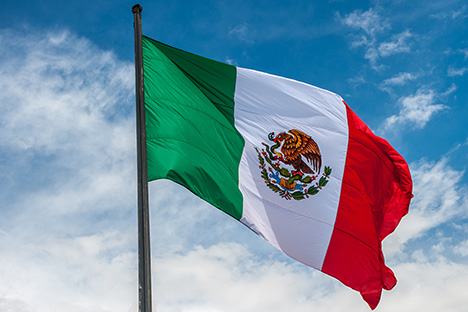The past 12 months have been unprofitable for most U.S. investors.
However, things are looking up… especially if you look down south.
And this column underscores the importance of geographical portfolio diversification.
U.S. stocks have given investors a lot to cry about over the past 12 months. But as the chart below shows, Mexican stocks have shareholders shouting “¡Olé!”

One of the most popular exchange-traded funds (ETFs) for investing in Mexican stocks is the iShares MSCI Mexico ETF (NYSE: EWW). It’s the largest country-specific ETF that focuses on Mexican stocks. Its largest holdings include América Móvil, Cemex SAB de CV, Grupo Financiero Banorte and Walmart de México y Centroamérica.
Over the last 12 months, the iShares MSCI Mexico ETF returned 20% with dividends reinvested, while the SPDR S&P 500 ETF Trust (NYSE: SPY) lost 4.3%.
Mexican stocks were also the surprise winner of 2022. The iShares MSCI Mexico ETF generated a positive 1.26% return, including dividends, while the SPDR S&P 500 ETF Trust went down 18.2%.
It was an impressive feat given 2022’s market conditions. It was even more impressive given the ETF’s massive underperformance in recent years.
Between April 11, 2013, and March 20, 2020, Mexican stocks suffered a brutal bear market. The iShares MSCI Mexico ETF declined a whopping 59.3%, with dividends reinvested.
Since March 2020, the Mexican ETF has soared – returning nearly 98%, with dividends reinvested, in three years.
Indeed, despite persistent negative headlines about Mexico’s crime, public safety and political challenges, Mexican companies and their stocks are outperforming.
Why?
For one, higher oil export prices have benefited the Mexican economy.
The country is also benefiting significantly from the “nearshoring” trend that has U.S. companies looking to Mexico for their manufacturing needs. An uptick in the U.S. economy should benefit Mexico too.
Globalization makes the case for geographic diversification even stronger.
Proper diversification – including investing across multiple regions – is the best way that I know to build a portfolio that produces consistent and lasting returns. It gives you exposure to different economies with different growth rates, from emerging markets (like Mexico) to more developed ones (like the U.S.).
Not that long ago, it was fairly difficult for U.S. investors to find information on foreign companies, let alone invest in them.
The good news is that today that’s not the case. It’s easier than ever to invest globally and find information about foreign companies – even in English. You can thank the internet!
From ETFs like the iShares MSCI Mexico ETF to American depositary receipts, there are several ways to gain exposure to companies operating outside of the U.S. without trying to buy them on a foreign stock exchange. You can just say no to currency conversion.
So don’t forget to double-check your portfolio’s geographical diversification. The Oxford Club recommends sticking 30% of your portfolio into investments outside of the U.S.
